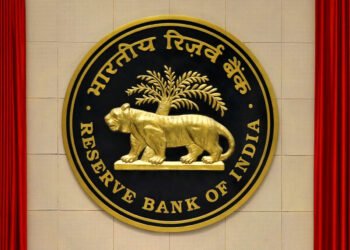Following ₹76,575 crore outflows in July–September, FPIs turn buyers again as India’s growth outlook, valuations, and global sentiment improve.
Mumbai (Economy India): After three consecutive months of heavy outflows, foreign portfolio investors (FPIs) made a strong return to Indian equities in October, infusing ₹14,610 crore into the market. The renewed optimism comes after global investors pulled out a combined ₹76,575 crore between July and September amid concerns over high U.S. yields and global risk aversion.
The reversal signals a notable shift in market sentiment, reflecting growing confidence in India’s economic stability, controlled inflation, and resilient domestic demand, which continue to make the country one of the most attractive emerging markets for foreign capital.
A Reversal After a Quarter of Relentless Selling
The three-month period from July to September saw consistent selling pressure from FPIs as global risk sentiment turned cautious.
- In July, FPIs sold equities worth ₹17,700 crore.
- In August, the sell-off intensified to ₹34,990 crore.
- In September, net outflows stood at ₹23,885 crore.
Together, these months witnessed an exodus of ₹76,575 crore from Indian markets. Analysts attribute this reversal to improving global liquidity conditions, stabilizing U.S. bond yields, and renewed risk appetite across emerging markets.

Foreign Investors Return to Equities as Valuations Turn Attractive
The October inflow marks a critical turning point. Analysts say that following months of profit booking, Indian valuations became comparatively attractive, especially when benchmark indices corrected in late September.
According to Himanshu Srivastava, Principal Analyst at Morningstar Investment Research,
“India continues to stand out as one of the strongest emerging markets. Economic growth remains steady, inflation is under control, and domestic demand is robust. Expectations of U.S. rate cuts and improved global liquidity have made high-growth markets like India appealing again.”
He added that the correction in share prices has provided a fresh opportunity for FPIs to increase exposure at lower valuations.
One-Day Data Reflects Short-Term Volatility
While monthly data suggests optimism, the day-to-day trading pattern reflects volatility.
On October 17, FPIs sold shares worth ₹6,728 crore, while Domestic Institutional Investors (DIIs) emerged as net buyers with purchases of ₹6,889 crore.
NSE data shows that DIIs bought ₹17,659 crore and sold ₹10,769 crore worth of shares, while FPIs purchased ₹11,096 crore and offloaded ₹17,824 crore, indicating mixed investor sentiment. Experts believe this short-term volatility is expected during a transition phase when markets adjust to shifting global conditions.
India Still a Bright Spot Among Emerging Economies
India’s economy continues to perform strongly compared to other emerging markets. Stable GDP growth, moderated inflation, and strong corporate earnings have positioned India as a preferred destination for foreign investors.
V.K. Vijayakumar, Chief Investment Strategist at Geojit Financial Services, said,
“India’s underperformance earlier this year reduced valuation differentials with other markets. Now, as global conditions stabilize and U.S.–India trade tensions ease, India’s relative performance is likely to improve. Investors are re-entering with renewed confidence in the long-term India story.”
U.S.–India Trade Relations and Policy Stability Boost Sentiment
Analysts also point to improving trade relations between India and the U.S., coupled with policy continuity in India, as major drivers of investor confidence.
Waqar Javed Khan, Senior Analyst at Angel One, remarked,
“The reduction in trade tensions between India and the U.S. has added a layer of comfort for FPIs. After the early-2025 selloff, Indian equities have become cheaper relative to global peers, creating a favorable entry point.”
He added that expectations of strong corporate earnings and capital expenditure growth in the infrastructure and manufacturing sectors are likely to sustain inflows through the next quarter.
FPIs Continue to Show Interest in Debt Markets
Apart from equities, FPIs also displayed steady interest in India’s debt markets. Between October 1 and 17, foreign investors pumped ₹5,332 crore through the General Limit route and another ₹214 crore via the Voluntary Retention Route (VRR).
Analysts note that India’s inclusion in global bond indices and expectations of a stable rupee are encouraging foreign participation in the fixed-income segment.
This diversification of foreign capital into both equity and debt reflects structural confidence in India’s macroeconomic fundamentals.
2025 Outflows Still High — But Signs of Revival Emerge
Despite October’s recovery, FPIs remain net sellers for 2025 so far, having withdrawn over ₹1.5 lakh crore from Indian equities since January. However, experts view the latest inflow as a sign of potential trend reversal.
Market strategists believe that if the U.S. Federal Reserve begins cutting interest rates and India maintains its growth momentum, foreign inflows could sustain for the remainder of FY2025–26.
Market Snapshot: Indices React to Global Volatility
On the last trading day of October (October 31), the Sensex fell 465 points to close at 83,938, while the Nifty 50 dropped 155 points to 25,722, following weak global cues and profit booking. During the session, the markets witnessed intraday volatility of nearly 800 points.
Despite the dip, market sentiment remains broadly constructive, driven by strong earnings visibility and domestic participation.

Expert Outlook: Gradual but Sustained Inflows Ahead
Economists expect that FPIs will continue to invest selectively across banking, manufacturing, and capital goods sectors, which are expected to benefit most from India’s capex-driven growth.
“We anticipate moderate but steady inflows in the coming months,” said a senior fund manager at a leading foreign institutional fund. “If inflation remains under control and U.S. yields soften, India could attract sustained FPI activity in both equity and debt.”
The ₹14,610 crore October inflow from FPIs marks a welcome break from the prolonged selling streak witnessed earlier this year. With improving global liquidity, resilient domestic fundamentals, and easing geopolitical concerns, India appears well-positioned to attract renewed foreign capital.
Analysts, however, caution that sustained inflows will depend on upcoming corporate earnings, policy clarity, and the direction of global monetary policy — factors that could define the trajectory of foreign investment in Asia’s third-largest economy.
(Economy India)












